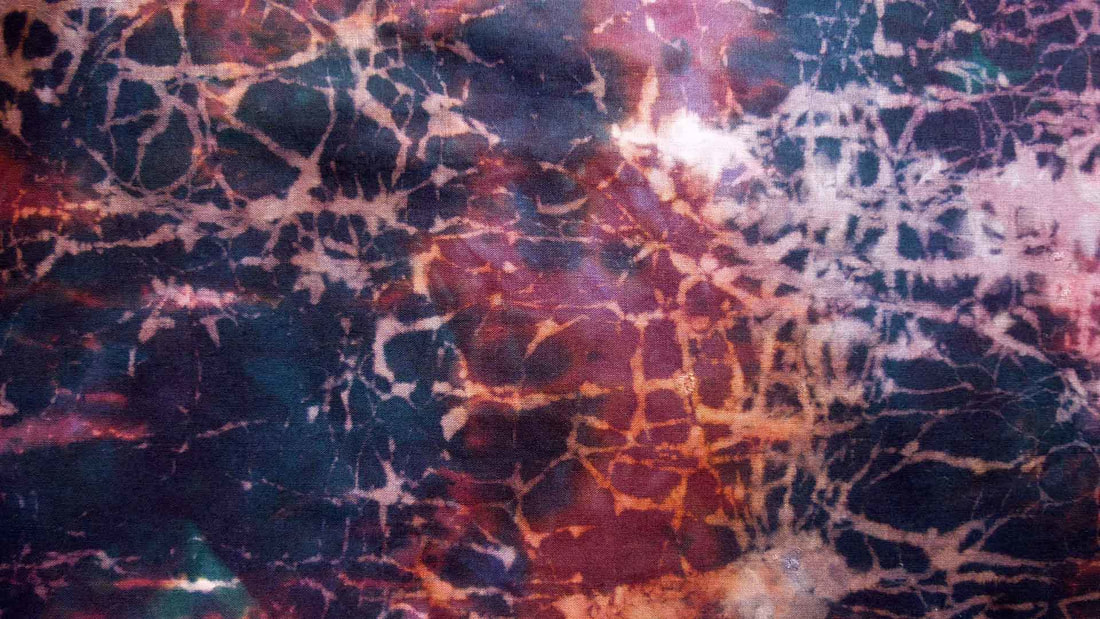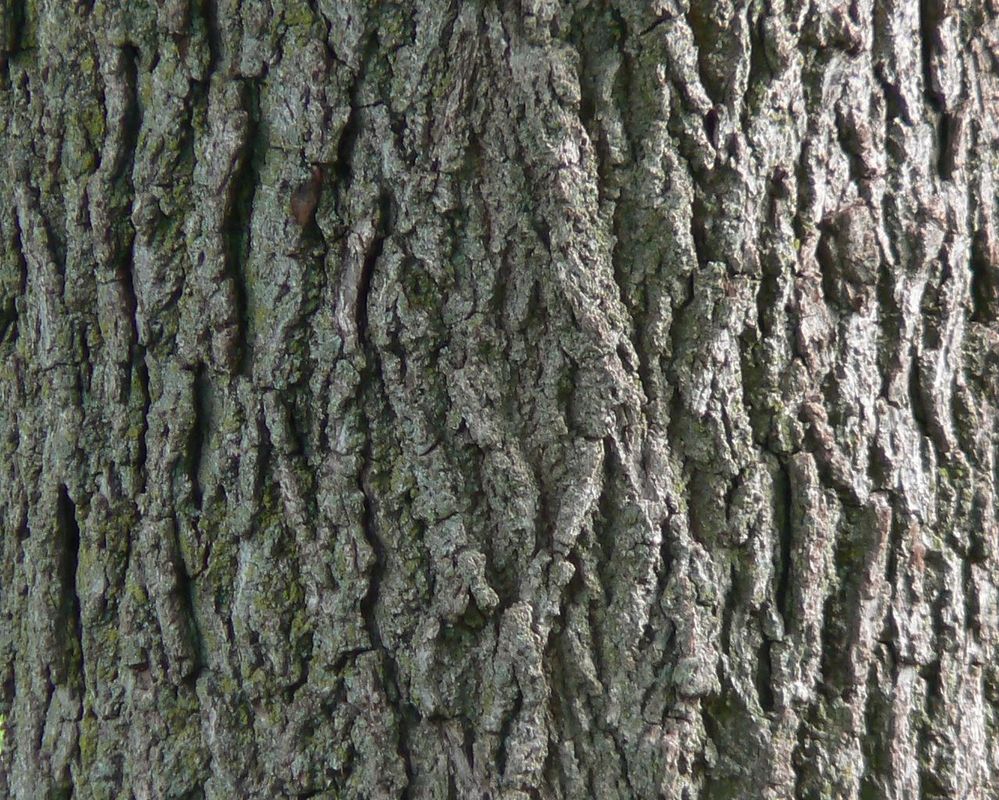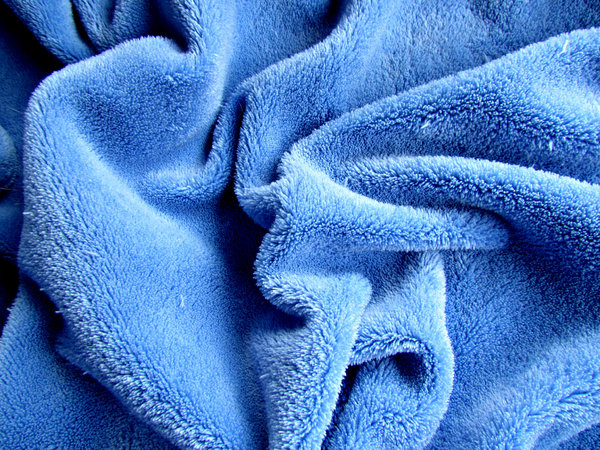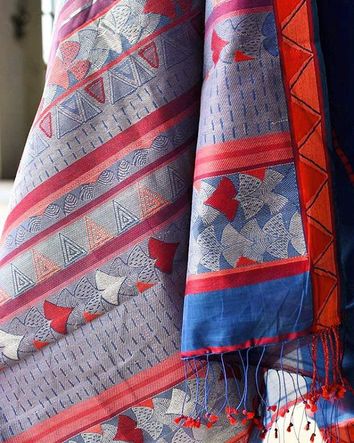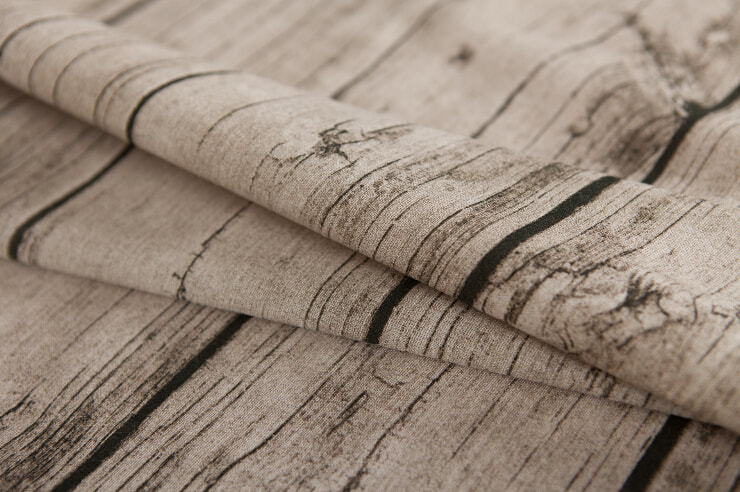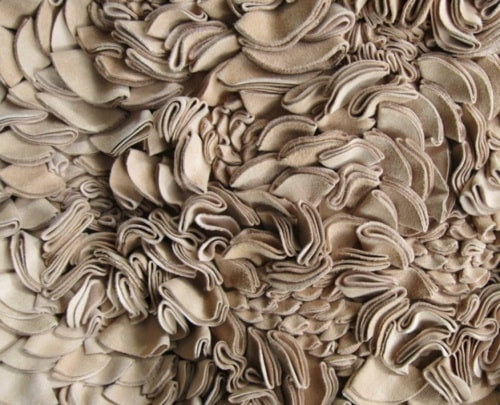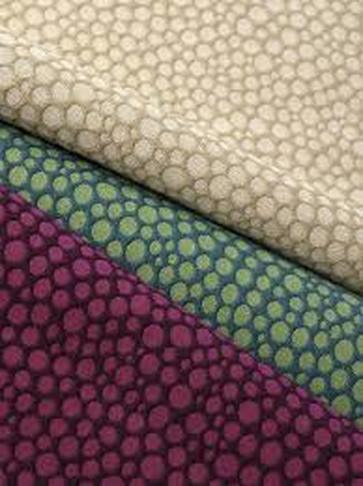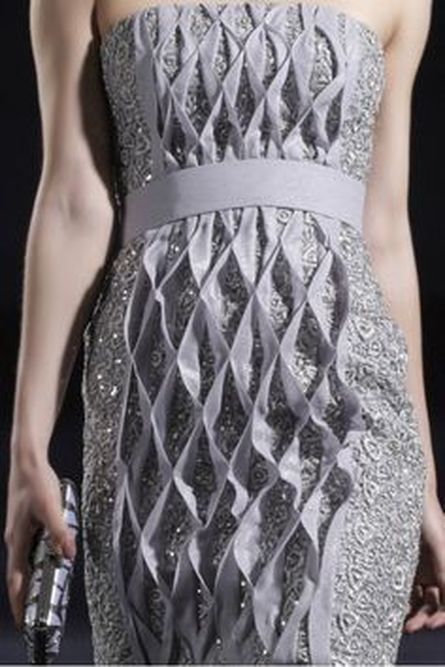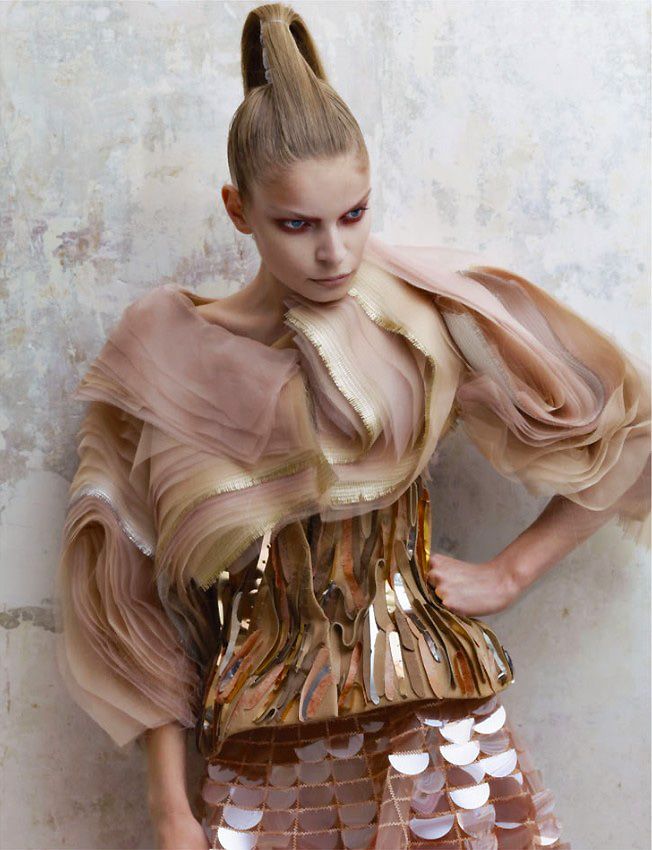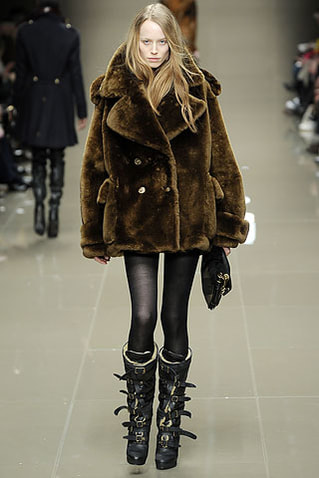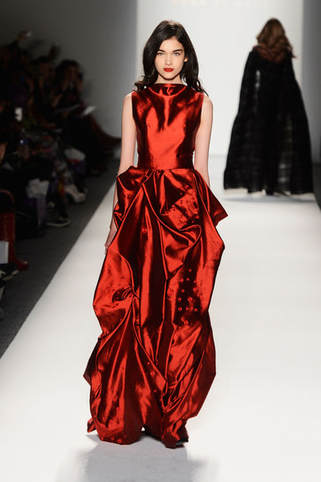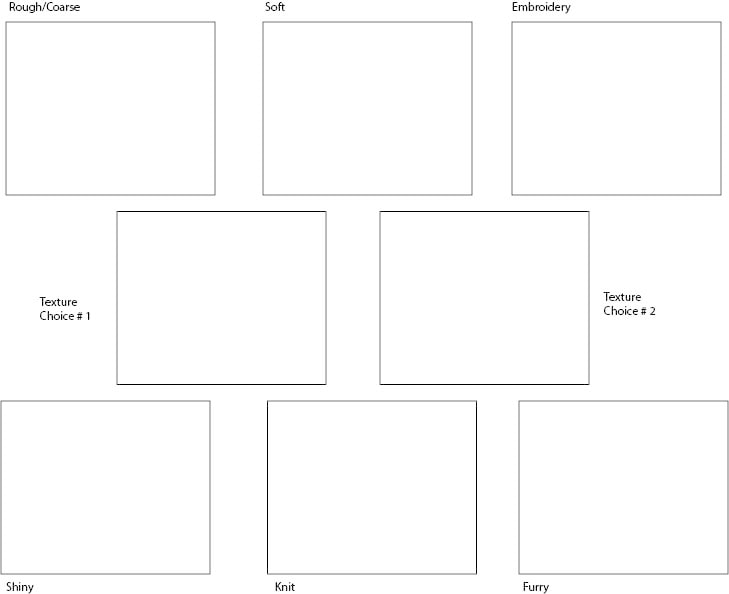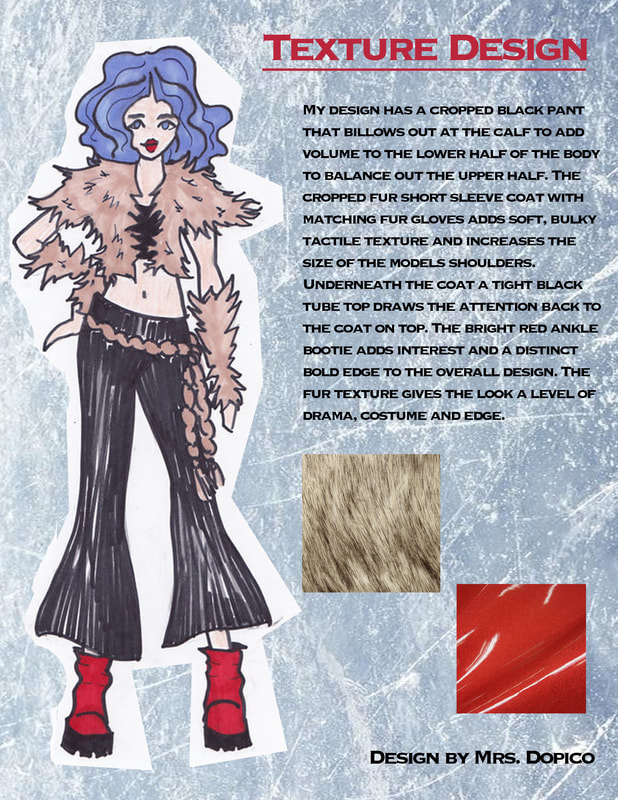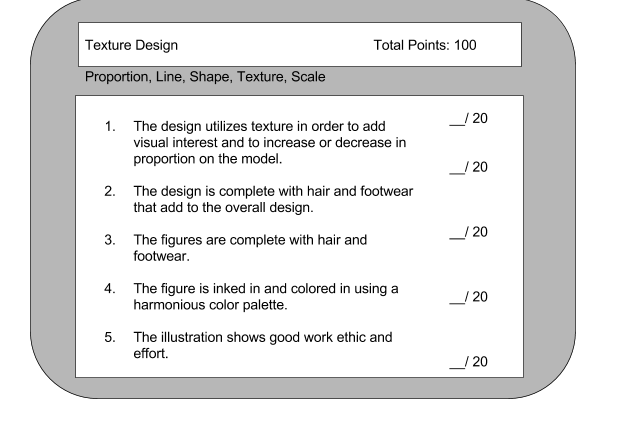|
Texture in Fashion Design
Texture is an important element that a designer must consider when designing a new look. Texture, is the feel of the surface of an object. There are two kinds; visual texture and tactile texture. With visual texture, it appears to the eye like it has a certain feel, like a pattern on a fabric but if you touched it, it doesn't actually feel the way it looks. Tactile texture is more truthful, it looks like how it actually feels if you were to touch it. In fashion design, texture is used in two ways:
Words that describe texture, (words you will use to describe your design...)
How texture is achieved:
Showing Increase in proportion and scale using texture:
Showing Decrease in proportion and scale using texture:
|
Assignment # 1
Copy and paste the following worksheet into a new Photoshop file. Just like the pattern worksheets, you need to find an example of each texture and paste it into the boxes. Place the finished example worksheet into a slide in your google portfolios for grading.
Tutorial Below if you need a refresher on how to do this:
Copy and paste the following worksheet into a new Photoshop file. Just like the pattern worksheets, you need to find an example of each texture and paste it into the boxes. Place the finished example worksheet into a slide in your google portfolios for grading.
Tutorial Below if you need a refresher on how to do this:
| examplesheet.pdf | |
| File Size: | 2357 kb |
| File Type: | |
|
Assignment # 2
You are to create one complete outfit with elements of texture.
|
|
Paragraph Assignment:
You will write a 5 sentence paragraph, describing the outfit that you have designed. Include it in your texture design layout on Adobe Photoshop. You must answer the following questions: EACH QUESTION IS WORTH 10 POINTS. 50 POINTS TOTAL.
|
Example Paragraph for Example Design:
My design has a cropped black pant that billows out at the calf to add volume to the lower half of the body to balance out the upper half. The cropped fur short sleeve coat with matching fur gloves adds soft, bulky tactile texture and increases the size of the models shoulders. Underneath the coat a tight black tube top draws the attention back to the coat on top. The bright red ankle bootie adds interest and a distinct bold edge to the overall design. The fur texture gives the look a level of drama, costume and edge. |
